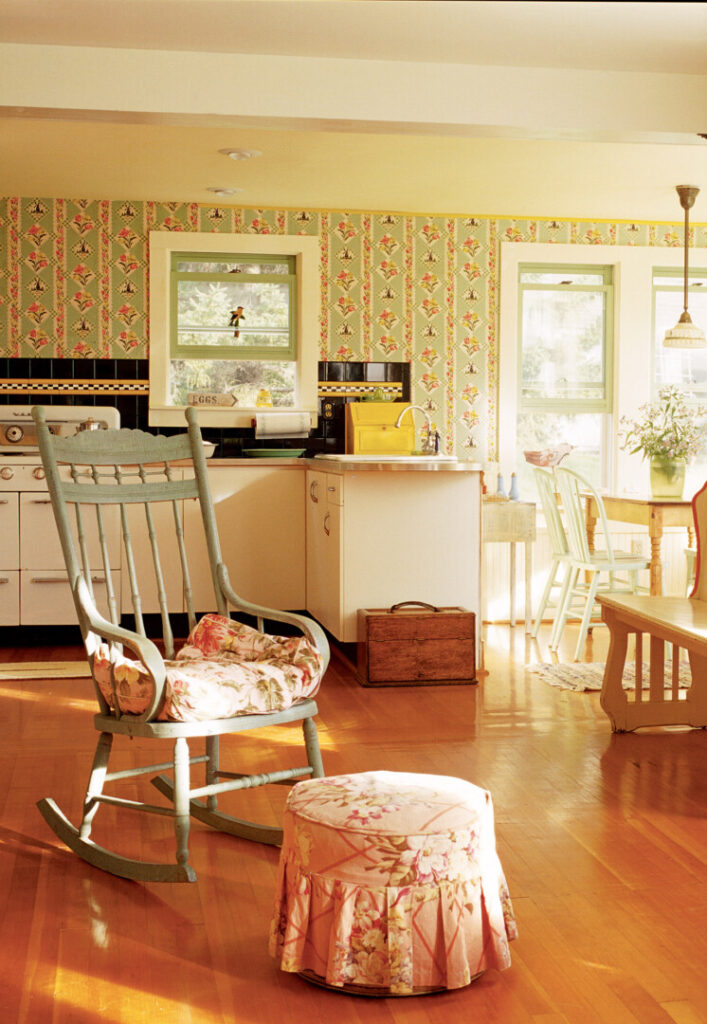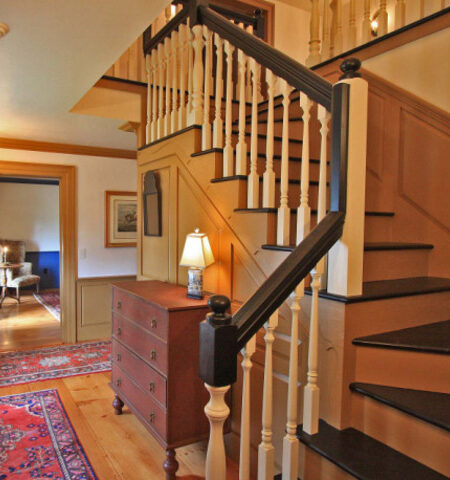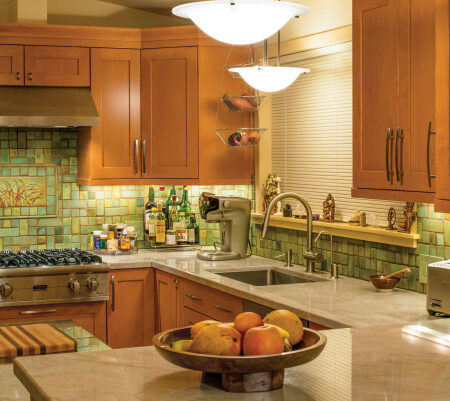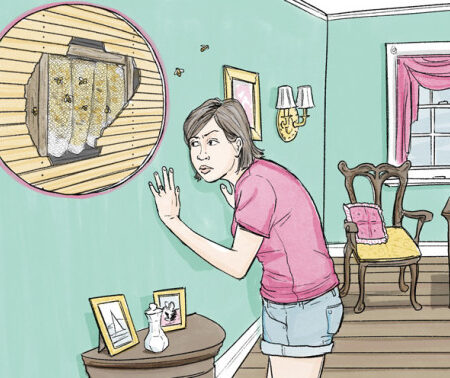This content was originally published on OldHouseOnline.com and has been republished here as part of a merger between our two businesses. All copy is presented here as it originally appeared there.
Wallpapered kitchens were rare before the electric era, for obvious reasons: kitchens were historically smoky, greasy rooms to be kept spare and easy to clean. During the Victorian era, urban kitchens were often out of sight, in the rear basement, to contain heat and smells and to provide easy access to deliveries. No one would have thought to wallpaper such rooms.
In rural farmhouses, however, as in tenement apartments, the kitchen might have had wallpaper chosen by the housewife, who spent time in the room.
The “sanitary“ white kitchens of the bungalow era rarely were papered. By the 1930s, inexpensive papers printed with “kitchen motifs“ were available. Designs included sprays of flowers or cherries, often with a geometric background; fruit arranged in clusters or over colored stripes; and naïve arrangements of windowpanes or plates.
Wallpapered kitchens were very common during the 1940s and throughout the 1950s. You’ve probably come across some of it when stripping a wall. Roosters were wildly popular, as were nostalgic farm motifs like orchard trees and vegetables. Repetitive geometric designs were rendered in pink and turquoise, yellow with cornflower blue. Cherries or geraniums were superimposed on stripes and polka dots; crank coffee grinders alternated with urns and cups. Flowerpots, strawberries, and teapots were ubiquitous.
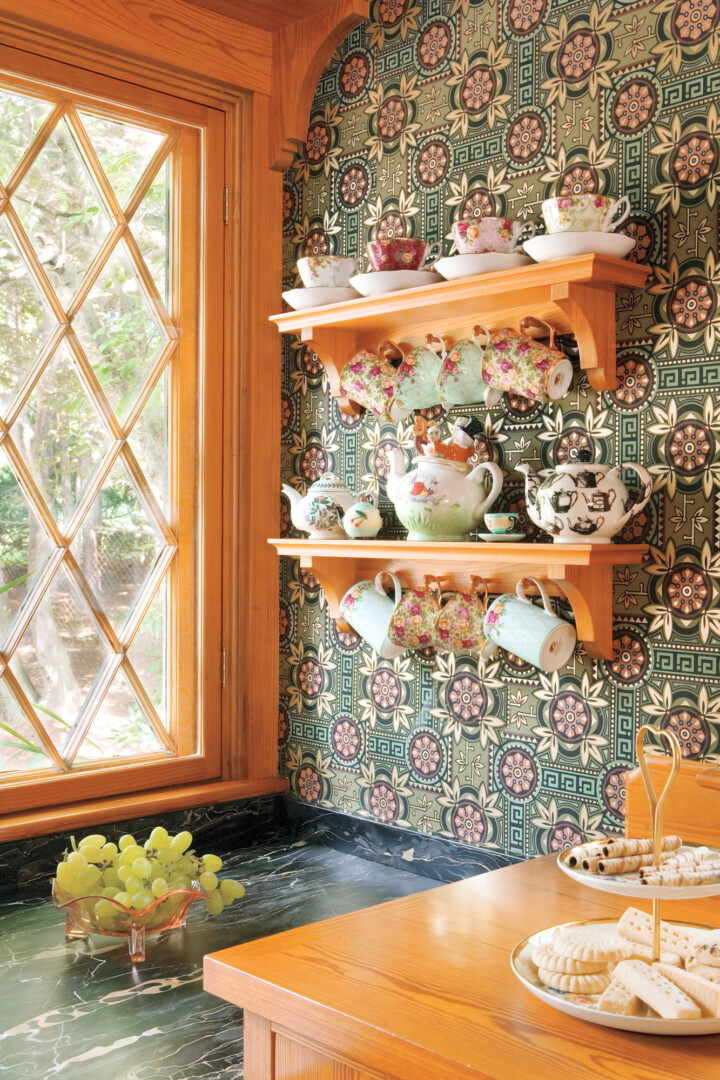
Durable-finish brands like Sanitas had been around since the 1920s, but vinyl wallcoverings were introduced in the 1950s and ’60s. Today, stoves have exhaust hoods and food preparation is comparatively minimal. Practical reasons for avoiding wallpaper in the kitchen have faded. If the humidity level is high, paper may peel. Used near a stove, paper will eventually discolor. Make it somewhat washable by coating it with matte-finish polyurethane.
Rely on stone and laminates, tile and semi-gloss paint. Use paper in clean areas: on an accent wall, or in the breakfast area, back hall, or pantry.


